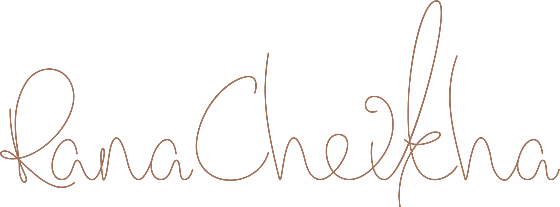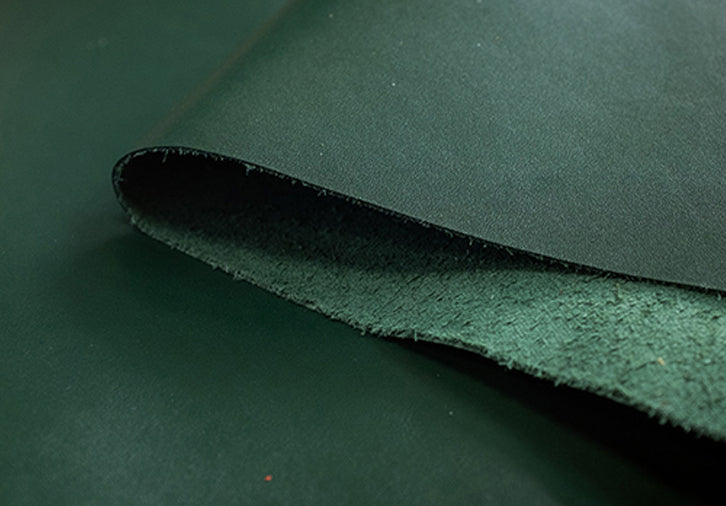We have all heard about the benefits of investing in leather shoes (and leather products in general), but in a world with so many options, the question remains: What are the different types of shoe leathers that we can choose from?
In its simplest form, leather is the material that comes from different animal hides and has been treated in a process known as tanning. This process primarily stops the aging process of leather and enable us to use it as a material. It is considered a bi-product of the meat industry and a great product that has many uses in various industries.
Because of the number of leathers that are available to discuss, I will divide the Different Types of Shoe Leathers blog into two separate articles. This first section (part 1) will be an overview of calfskin leather as it the most commonly used leather in making quality footwear, especially in high-quality dress shoes, and is also the leather of choice for Rana Cheikha shoes.
Calfskin leather is sourced from young cows or calves (usually between six and 12 months). Because of the young age of the animal, the material is thin and supple with characteristically fine grain that is mostly free from blemishes and scares. At the same time, calfskin leather is quite durable because of the dense fiber structure compared to that in older animals.
When it comes to footwear, calfskin shoes are a great choice as they adjust to the shape of the foot when worn, which makes shoes made of this type of leather grow more comfortable over time. It is available in a wide variety of colors and finishes because of its ability to take dyes and polishes well.
Although prone to scuffing and scratching, shoes made of calfskin leather can last for years if treated well. With the right kind of polishing and buffing, surface wear marks can be covered and may also develop a beautiful patina over time. Although no truly heavy maintenance is required, it is a good idea to polish and moisturize the leather to avoid drying and cracking. You can always refer to one of our blogs like How To Keep Your Shoes Shinning to know how to do so.
Here is a list of the most common types of calfskin leather:
-
Crust Calf
Crust calf refers to leather that is dried but not dyed after the tanning process, it is left unfinished in its natural color. This leather is often used in premium shoe making where a patina artist hand-applies patina or colour to the shoe at the shoe factory or workshop. This type of shoe making is mostly adopted by Italian and French shoe makers who have a history of beautiful finishes and colours.
-
Boxcalf
Boxcalf leather is the most common type of leather used in traditional shoes and is a premium choice because of its uniform and smooth finish. The finish of this type of leather gives it a distinctive shine that goes from matte to shiny gloss (depending on light reflection). It is a delicate leather and prone to scuffs and scratches, so does need some regular maintenance.
-
Bookbinder Calf
This type of leather is polished or shined calfskin where an acrylic coating is used to hide blemishes, giving the skin a plastic look and feel. The coating makes this type of leather durable, especially in wet climates, and also makes it quite rigid and prone to cracks which are not treatable as in un-coated leathers.
-
Suede
Suede is leather that uses the underside of the animal hide, the inside part of the calf. There are two types of suede leather: full grain suede and split grain suede.
4a. Full Grain Suede
Full grain suede is a higher-end type of suede that is characteristically extremely soft and drastically changes from light to dark depending on the direction of the hair. The hairs are longer and have a shimmery more vibrant shine in comparison to other types of split suede (explained next). While being much more expensive than split, it is not as durable in wear as any dirt it catches is much more visible and more difficult to treat.
4b. Split Grain Suede
Split grain suede is made from trimming down the flesh part of the skin, sanded then buffed to create a soft thin texture. Although not as elegant looking as full grain suede, split grain suede is more durable in wear. It is important to always have a little bit of maintenance done to ensure a longer life for your suede shoes.
-
Grain Calfskin
Grain calfskin is stamped calfskin leather, it does not have a natural grain. It is instead stamped at the factory, and usually on low grade leathers. The textured finish is good option for shoes that will be worn in an active lifestyle as it hides wear and tear quite well. The grains come in different forms and include the Pebble Grain (that stand out and quite often intended for shoes that will be worn in harsh weathers), the Pin Grain (which is considered as a smaller version of the pebble grain) and the Hatch Grain (which is a softer and subtler looking grain).
In part 2, I’ll give an overview of a few more kinds of shoe leathers such as cowhide, patent and buffalo. Whatever your preference may be, it is important to know what kinds of leathers are available for your shoes and what is most suitable for your lifestyle.
Get in touch here if you have any questions before investing in a pair of shoes from the Rana Cheikha and Wander Collections.
And always remember to use our guides that include How To Identify Real Leather Shoes and How to Fix Scratched Leather Shoes to make sure they’re always looking great!
Signing-off: The Shoe Advisor
// Get in touch here or by email at rana@ranacheikha.com for more insight, queries and information //

